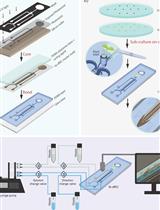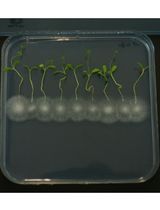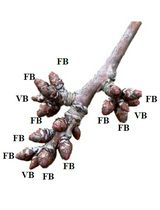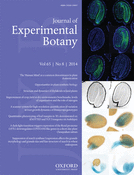- Submit a Protocol
- Receive Our Alerts
- Log in
- /
- Sign up
- My Bio Page
- Edit My Profile
- Change Password
- Log Out
- EN
- EN - English
- CN - 中文
- Protocols
- Articles and Issues
- For Authors
- About
- Become a Reviewer
- EN - English
- CN - 中文
- Home
- Protocols
- Articles and Issues
- For Authors
- About
- Become a Reviewer
Tissue Culturing and Harvesting of Protonemata from the Moss Physcomitrella patens
Published: Vol 5, Iss 15, Aug 5, 2015 DOI: 10.21769/BioProtoc.1556 Views: 10449
Reviewed by: Arsalan DaudiTie LiuAnonymous reviewer(s)

Protocol Collections
Comprehensive collections of detailed, peer-reviewed protocols focusing on specific topics
Related protocols

Bi-directional Dual-flow-RootChip for Physiological Analysis of Plant Primary Roots Under Asymmetric Perfusion of Stress Treatments
Claudia Allan [...] Claudia-Nicole Meisrimler
Aug 5, 2023 1857 Views

Closed Systems to Study Plant–Filamentous Fungi Associations: Emphasis on Microscopic Analyses
Vasiliki Skiada and Kalliope K. Papadopoulou
Feb 20, 2025 2720 Views

Enzymatic Starch Quantification in Developing Flower Primordia of Sweet Cherry
Nestor Santolaria [...] Afif Hedhly
Apr 5, 2025 1809 Views
Abstract
Moss spores germinate to form an alga-like filamentous structure called the protonemata. Protonemata are the earliest stage (the haploid phase) of a bryophyte life cycle and eventually give rise to a mature gametophyte. Protonemata of the moss Physcomitrella patens (P. patens) are important not only in their life cycle, but also for research. Protonemata are used for various things such as RNA/DNA extractions and protoplast isolation. We can obtain high yield of intact protoplasts from protonemata. Protoplasts can be used to study a variety of cellular processes, such as subcellular localization of proteins, isolation and analyses of intact organelles and DNA transformation. In addition, the completed sequence of the P. patens genome facilitates the use of genetic and molecular approaches to identify genes and the ability of the moss to undergo homologous recombination at appreciable frequency offers a powerful way to determine gene function. Therefore, culture of P. patens protonemata is critical.
Materials and Reagents
- A vigorously growing tissue which is about 10 d old (the earliest stage of gametophyte; Physcomitrella patens subspecies patens (Gransden) was used as the tissue and it was obtained from Ralph S. Quatrano (Department of Biology, Washington University in St. Louis, MO 63130, USA)
- 200 ml sterile distilled water
- 70% alcohol in a spray bottle (for surface sterilization)
- Growth medium (see Recipes)
Equipment
- 1 L flask in which to prepare the growth medium
- Sterile petri dishes (90-mm)
- Sterile cellophane discs
- Sterile tweezers
- Sterile test tubes (25 x 150 mm)
- Micropore surgical tape
- Sterile pipettes (1 ml)
- Sterile tips (1 ml)
- Dispensing instrument (e.g., IKA T 10 basic ULTRA-TURRAX®)
- Laminar flow cabinet
- Autoclave (e.g., Sanyo, model: MLS-3780 )
Procedure
Note: Steps 2-12 should be carried out under sterile conditions.
- BCDA medium is prepared according to Table 1 and sterilized by an autoclave for 20 min at 121 °C;
- Surface sterilization is performed with 70% alcohol in the Laminar flow hood;
- Media was cooled to 60 °C and approximately 30 ml BCDA medium was poured into sterile petri dishes (90 mm). This was allowed to cool until the media solidified; Place a piece of sterile cellophane discs onto the BCDA medium (Video 1);
Video 1. Place a piece of sterile cellophane discs onto the BCDA medium - Place one petri dish tissue (vigorously growing tissue) into one test tube (Video 2);
Video 2. Place one petri dish tissue into one test tube - Add 6-8 ml of H2O to one sterile test tube (containing one petri dish tissue), and cut it into fragments using dispensing instrument for 1-2 min at a speed of about 15,000 rpm;
- Pipette 1-2 ml of the protonemata suspension from step 6 onto each petri dish from step 4. Spread the suspension evenly by gently swirling the plates (Video 3);
Video 3. Pipette 1-2 ml of the protonemata suspension from step 6 onto each petri dish from step 4. Spread the suspension evenly by gently swirling the plates - Seal the Petri dishes with micropore surgical tape;
- Incubate these fragments for 6-7 d under standard conditions (25 °C) with a light cycle of 16 h of light/8 h of darkness and a light intensity of 70-80 μmol/s/m2;
- Transfer 1-2 dishes of the tissue (over cellophane) onto BCD solid media (Table 2) growth 3-4 d under the same culture conditions to step 9 for next cycle (this is a vigorously growing tissue which is about 10 d old tissues; Video 4);
Video 4. Transfer 1-2 dishes of the tissue onto BCD solid media growth 3-4 d under the same culture conditions to step 9 for next cycle - Harvest the tissue (protonemata of P. patens from step 9) for downstream analysis by scraping them from the cellophane using sterile tweezers.
- For tissue stock, take a tiny amount (about 2 mm2; using sterile tweezers) of 10 d old tissues into sterile test tubes with BCD medium. Wrap the tubes in foil and store them at 4 °C. They remain viable for about six months.
Recipes
- Growth medium
Table 1. BCDA medium recipeReagent Quantity (for 1 L) Final concentration Solution B 10 ml 1 mM MgSO4 Solution C 10 ml 1.84 mM KH2PO4 Solution D 10 ml 10 mM KNO3 CaCl2 111 mg 1 mM FeSO4.7H2O 12.5 mg 45 μM (NH4)2C4H4O6 0.92 g 5 mM Agar 7.5 g 0.75% (w/v) Glucose 5 g 0.5% (w/v) Hoagland’s A-Z trace 1 ml Trace element solution H2O To 1 L
Table 2. BCD medium recipeReagent Quantity (for 1 L) Final concentration Solution B 10 ml 1 mM MgSO4 Solution C 10 ml 1.84 mM KH2PO4 Solution D 10 ml 10 mM KNO3 CaCl2 111 mg 1 mM FeSO4.7H2O 12.5 mg 45 μM Agar 7.5 g 0.75% (w/v) Glucose 5 g 0.5% (w/v) Hoagland’s A-Z trace 1 ml Trace element solution H2O To 1 L
Table 3. Recipe of Solution B, C, D and Hoagland’s A-Z traceSolution B, C, D and Hoagland’s A-Z trace are sterilized and then stored at 4 °C or room temperature.Reagent Quantity (for 1 L) Final concentration Solution B MgSO4.7H2O 25 g 0.1 M H2O To 1 L Solution C KH2PO4 25 g 184 mM H2O To 1 L Adjust the pH to 6.5 using KOH Solution D KNO3 101 g 1 M H2O To 1 L Hoagland’s A-Z trace Al2(SO4)3.K2SO4.24H2O 55 mg 0.006% (w/v) CoCl2.6H2O 55 mg 0.006% (w/v) CuSO4.5H2O 55 mg 0.006% (w/v) H3BO3 614 mg 0.061% (w/v) KBr 28 mg 0.003% (w/v) KI 28 mg 0.003% (w/v) LiCl 28 mg 0.003% (w/v) MnCl2.4H2O 389 mg 0.039% (w/v) SnCl2.2H2O 28 mg 0.003% (w/v) ZnSO4.7H2O 55 mg 0.006% (w/v) H2O To 1 L
Acknowledgments
This work was supported by grants from Beijing Natural Science Foundation (No. 5132004), China Postdoctoral Science Foundation and State Education Ministry Scientific Research Foundation for the Returned Overseas Chinese Scholars to Dr. Wang.
References
- Ashton, N. W., and Cove, D. J. (1977). The isolation and preliminary characterisation of auxotrophic and analogue resistant mutants in the moss Physcomitrella patens. Mol Gen Genet 154, 87-95.
- Boyd, P. J., Hall, J., and Cove, D. J. (1988). An airlift fermenter for the culture of the moss Physcomitrella patens. In: Glime, J. M. (ed). Methods in bryology. Hattori Botany Laboratory, 41-45.
- Cove, D. J., Perroud, P. F., Charron, A. J., McDaniel, S. F., Khandelwal, A. and Quatrano, R. S. (2009). The moss Physcomitrella patens: a novel model system for plant development and genomic studies. Cold Spring Harb Protoc 2009(2): pdb emo115.
Article Information
Copyright
© 2015 The Authors; exclusive licensee Bio-protocol LLC.
How to cite
Wang, X. and He, Y. (2015). Tissue Culturing and Harvesting of Protonemata from the Moss Physcomitrella patens. Bio-protocol 5(15): e1556. DOI: 10.21769/BioProtoc.1556.
Category
Plant Science > Plant cell biology > Tissue analysis
Plant Science > Plant physiology > Plant growth
Cell Biology > Cell isolation and culture > Cell growth
Do you have any questions about this protocol?
Post your question to gather feedback from the community. We will also invite the authors of this article to respond.
Share
Bluesky
X
Copy link









